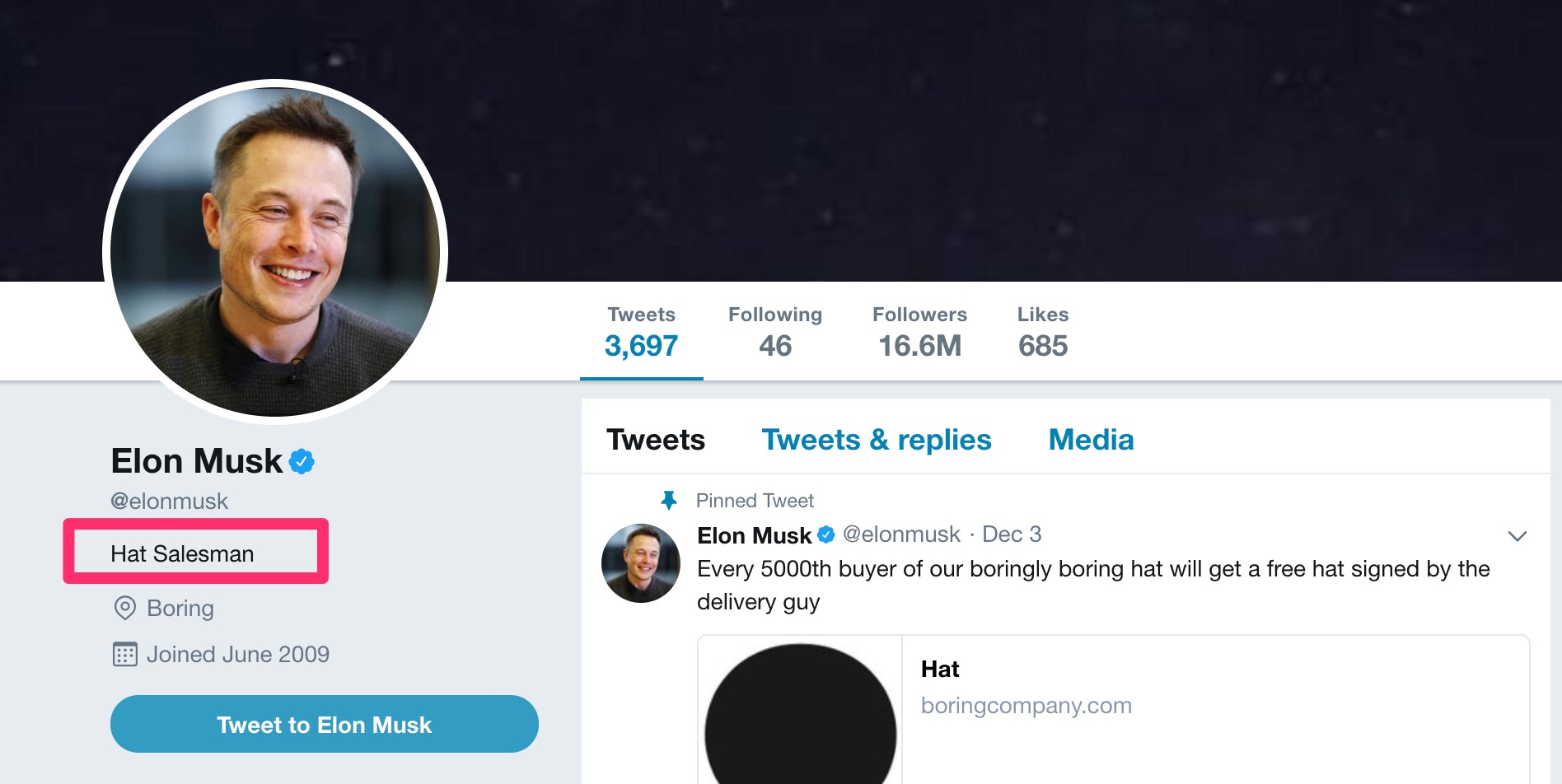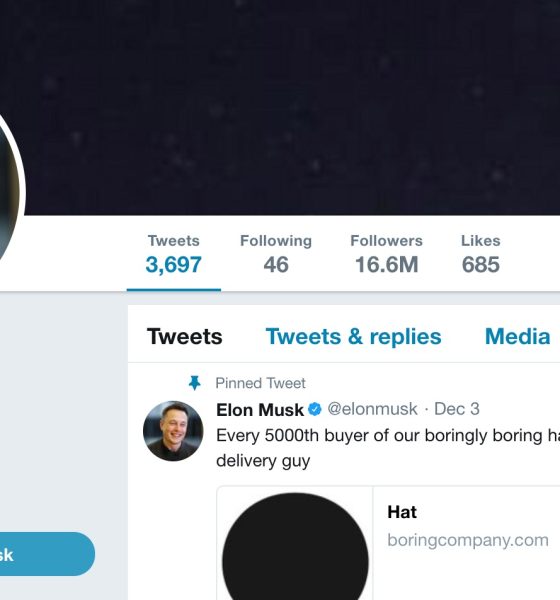

News
Could Elon Musk tweet for all of eternity? Digital avatar technology could make it happen
Digital avatars are a blend of science fiction and our current reality, but where is that line drawn, really? Imagine the current minds behind today’s most promising technologies and businesses leaving electronic copies of themselves so that, rather than just existing in nostalgic memories, they could continue contributing to the global conversation for all of digital eternity.
That’s right. The tweets of Elon Musk wouldn’t just be archived for historic perusal. He’d still be tweeting (or opining on a similar platform) long after his great-great-great-grandchildren were graduating from high school on Mars.
Of course, that particular goal could likely be achieved with minimal coding effort utilizing a dataset of his public comments, but that’s not all digital avatar technology is proposing. Imagine being able to approach Elon for personalized business advice, his opinion on a proposed carbon regulation, or thoughts on the name of an off-planet colony, all without the real magnate (magnet?) being directly involved in the conversation – or even alive, for that matter.
MIT Technology Review recently published an article featuring Augmented Eternity, a company developing an application which will host digital personas based on its customers that can be interacted with posthumously. For example, a customer’s business persona could give advice on a corporate deal, and a private persona could be involved with family matters. Utilizing personal data analyzed by artificial intelligence to achieve its goals, Augmented Eternity isn’t the only business on the market for this kind of digital interactivity.
Eternime wants you to live forever as a digital version of your after you die. [Credit: Eterni.me]
The company Eterni.me describes its services as a collection of “your thoughts, stories and memories, curate[d] [into] an intelligent avatar that looks like you…[because]…we all pass away, sooner or later…eventually, we are all forgotten.” Another company with a focus on the living over the dead, ObEN, describes its product as “Personal Artificial Intelligence (PAI)” comprising “personalized digital avatars [that] look, sound, sing, and behave like you…capable of performing a variety of useful tasks.” With its product being a “verified intelligent 3D avatar…perform[ing] activities on your behalf”, ObEN takes direct aim at increasing present day productivity, i.e., benefitting the customer while they are alive.
Admittedly, the idea of storing personal data for use in an artificial intelligence environment isn’t a new one. The concept of creating an avatar embodying the personality of any person has at least been floating around since science fiction envisioned separating human minds from their bodies. One of the notable recent imaginings in entertainment of this concept was seen in the episode, “Be Right Back” from the British science fiction series, “Black Mirror”. In the episode, a widow is able to recreate her dead partner, first as a type of chat box, then a telephone personality, and finally a corporeal being, all by using data obtained via his public electronic records.
Another recent and compelling imagining of this scenario is found in the series, “Caprica”, wherein a teenage girl’s father uploads a sentient avatar of his dead daughter into an advanced robot. The sentience, perhaps, is the factor that makes the software most dangerous, and the avatar’s actions throughout the series confirm this concern. Danger and advanced artificial intelligence are two concepts that seem to come wrapped up in one another, and here we come full circle back to Elon Musk.
When asked what he sees about AI that others with less concern about its future do, Elon replied, “Smart people…define themselves by their intelligence and…they don’t like the idea that a machine could be way smarter than them, so they discount the idea…it’s the wishful thinking situation.” Having also posited that AI is more dangerous than nuclear warheads, there’s no mistaking his position that more care is needed towards the safety of its advancement.
Another major concern of Elon’s, however, is an extinction-level event which will end humanity, and this concern is part of what drives his and SpaceX’s mission towards colonization of Mars. Could digital avatars be a place where concerns and prospects find common ground? Aside from physically relocating part of humanity to another planet to ensure its long-term survival, encapsulating humanity in digital (smarter?) form as proposed by avatar companies might be another way to ensure the legacy of the species, not just individual customers.
Then again, if we’re all living in a simulation to begin with, digitizing our personas may just be completing the predicted circle of life. Stay tuned – the future of tech moves fast.

Cybertruck
Tesla updates Cybertruck owners about key Powershare feature

Tesla is updating Cybertruck owners on its timeline of a massive feature that has yet to ship: Powershare with Powerwall.
Powershare is a bidirectional charging feature exclusive to Cybertruck, which allows the vehicle’s battery to act as a portable power source for homes, appliances, tools, other EVs, and more. It was announced in late 2023 as part of Tesla’s push into vehicle-to-everything energy sharing, and acting as a giant portable charger is the main advantage, as it can provide backup power during outages.
Cybertruck’s Powershare system supports both vehicle-to-load (V2L) and vehicle-to-home (V2H), making it flexible and well-rounded for a variety of applications.
However, even though the feature was promised with Cybertruck, it has yet to be shipped to vehicles. Tesla communicated with owners through email recently regarding Powershare with Powerwall, which essentially has the pickup act as an extended battery.
Powerwall discharge would be prioritized before tapping into the truck’s larger pack.
However, Tesla is still working on getting the feature out to owners, an email said:
“We’re writing to let you know that the Powershare with Powerwall feature is still in development and is now scheduled for release in mid-2026.
This new release date gives us additional time to design and test this feature, ensuring its ability to communicate and optimize energy sharing between your vehicle and many configurations and generations of Powerwall. We are also using this time to develop additional Powershare features that will help us continue to accelerate the world’s transition to sustainable energy.”
Owners have expressed some real disappointment in Tesla’s continuous delays in releasing the feature, as it was expected to be released by late 2024, but now has been pushed back several times to mid-2026, according to the email.
Foundation Series Cybertruck buyers paid extra, expecting the feature to be rolled out with their vehicle upon pickup.
Cybertruck’s Lead Engineer, Wes Morrill, even commented on the holdup:
As a Cybertruck owner who also has Powerwall, I empathize with the disappointed comments.
To their credit, the team has delivered powershare functionality to Cybertruck customers who otherwise have no backup with development of the powershare gateway. As well as those with solar…
— Wes (@wmorrill3) December 12, 2025
He said that “it turned out to be much harder than anticipated to make powershare work seamlessly with existing Powerwalls through existing wall connectors. Two grid-forming devices need to negotiate who will form and who will follow, depending on the state of charge of each, and they need to do this without a network and through multiple generations of hardware, and test and validate this process through rigorous certifications to ensure grid safety.”
It’s nice to see the transparency, but it is justified for some Cybertruck owners to feel like they’ve been bait-and-switched.
News
Tesla’s northernmost Supercharger in North America opens

Tesla has opened its northernmost Supercharger in Fairbanks, Alaska, with eight V4 stalls located in one of the most frigid cities in the U.S.
Located just 196 miles from the Arctic Circle, Fairbanks’s average temperature for the week was around -12 degrees Fahrenheit. However, there are plenty of Tesla owners in Alaska who have been waiting for more charging options out in public.
There are only 36 total Supercharger stalls in Alaska, despite being the largest state in the U.S.
Eight Superchargers were added to Fairbanks, which will eventually be a 48-stall station. Tesla announced its activation today:
North America’s northernmost Supercharger Fairbanks, AK (8 stalls) opened to public. https://t.co/M4l04DZ6B5 pic.twitter.com/zyL6bDuA93
— Tesla Charging (@TeslaCharging) December 12, 2025
The base price per kWh is $0.43 at the Fairbanks Supercharger. Thanks to its V4 capabilities, it can charge at speeds up to 325 kW.
Despite being the northernmost Supercharger in North America, it is not even in the Top 5 northernmost Superchargers globally, because Alaska is south of Norway. The northernmost Supercharger is in Honningsvåg, Norway. All of the Top 5 are in the Scandanavian country.
Tesla’s Supercharger expansion in 2025 has been impressive, and although it experienced some early-quarter slowdowns due to V3-to-V4 hardware transitions, it has been the company’s strongest year for deployments.
🚨🚨 Tesla Supercharging had a HUGE year, and they deserve to be recognized.
🍔 Opened Tesla Diner, a drive-in movie theater with awesome, Chef-curated cuisine
🔌 Gave access to Superchargers to several EV makers, including Hyundai, Genesis, Mercedes-Benz, Kia, Lucid, Toyota,… pic.twitter.com/yYT2QEbqoW
— TESLARATI (@Teslarati) December 10, 2025
Through the three quarters of 2025, the company has added 7,753 stations and 73,817 stalls across the world, a 16 percent increase in stations and an 18 percent increase in stalls compared to last year.
Tesla is on track to add over 12,000 stalls for the full year, achieving an average of one new stall every hour, an impressive statistic.
Recently, the company wrapped up construction at its Supercharger Oasis in Lost Hills, California, a 168-stall Supercharger that Tesla Solar Panels completely power. It is the largest Supercharger in the world.
News
Tesla shocks with latest Robotaxi testing move
Why Tesla has chosen to use a couple of Model S units must have a reason; the company is calculated in its engineering and data collection efforts, so this is definitely more than “we just felt like giving our drivers a change of scenery.”

Tesla Model S vehicles were spotted performing validation testing with LiDAR rigs in California today, a pretty big switch-up compared to what we are used to seeing on the roads.
Tesla utilizes the Model Y crossover for its Robotaxi fleet. It is adequately sized, the most popular vehicle in its lineup, and is suitable for a wide variety of applications. It provides enough luxury for a single rider, but enough room for several passengers, if needed.
However, the testing has seemingly expanded to one of Tesla’s premium flagship offerings, as the Model S was spotted with the validation equipment that is seen entirely with Model Y vehicles. We have written several articles on Robotaxi testing mules being spotted across the United States, but this is a first:
🚨 Tesla is using Model S vehicles fitted with LiDAR rigs to validate FSD and Robotaxi, differing from the Model Ys that it uses typically
Those Model Y vehicles have been on the East Coast for some time. These Model S cars were spotted in California https://t.co/CN9Bw5Wma8 pic.twitter.com/UE55hx5mdd
— TESLARATI (@Teslarati) December 11, 2025
Why Tesla has chosen to use a couple of Model S units must have a reason; the company is calculated in its engineering and data collection efforts, so this is definitely more than “we just felt like giving our drivers a change of scenery.”
It seems to hint that Tesla could add a premium, more luxury offering to its Robotaxi platform eventually. Think about it: Uber has Uber Black, Lyft has Lyft Black. These vehicles and services are associated with a more premium cost as they combine luxury models with more catered transportation options.
Tesla could be testing the waters here, and it could be thinking of adding the Model S to its fleet of ride-hailing vehicles.
Reluctant to remove the Model S from its production plans completely despite its low volume contributions to the overall mission of transitioning the world to sustainable energy, the flagship sedan has always meant something. CEO Elon Musk referred to it, along with its sibling Model X, as continuing on production lines due to “sentimental reasons.”
However, its purpose might have been expanded to justify keeping it around, and why not? It is a cozy, premium offering, and it would be great for those who want a little more luxury and are willing to pay a few extra dollars.
Of course, none of this is even close to confirmed. However, it is reasonable to speculate that the Model S could be a potential addition to the Robotaxi fleet. It’s capable of all the same things the Model Y is, but with more luxuriousness, and it could be the perfect addition to the futuristic fleet.








